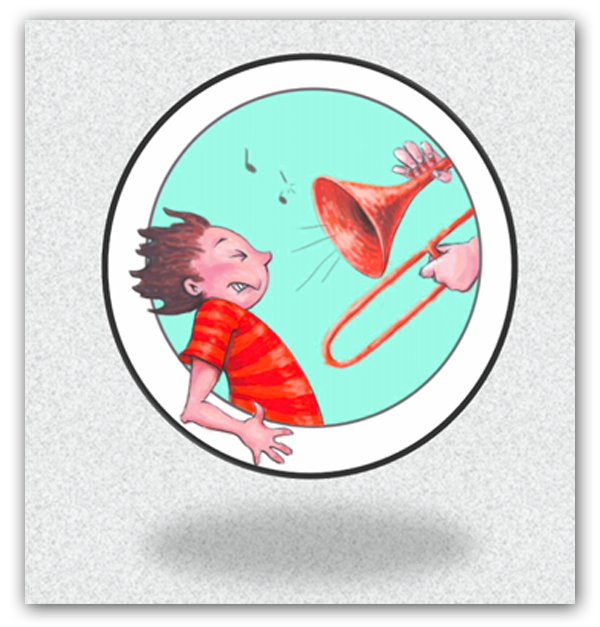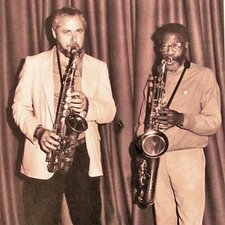JoHen Tunes Up "Night & Day"
Joe Henderson's Reharmonization and Solo Transcription
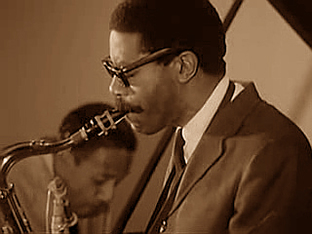 Joe Henderson w/ Horace Silver in France- July, 1964
Joe Henderson w/ Horace Silver in France- July, 1964 "Night & Day" would be the final track on the "B" side of the original vinyl LP "Inner Urge", Henderson's fourth as a leader for Blue Note; and featured then current Coltrane Quartet members McCoy Tyner and Elvin Jones on piano and drums respectively; as well as Bob Cranshaw, who was pretty much Blue Note's house bassist at the time.
The album "Inner Urge" was titled after the now classic Henderson original and the subject of an earlier post. Both the tune and the album are iconic examples of '60's compositional, harmonic and improvisational innovations.
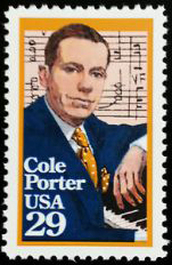 A stamp for JoHen?
A stamp for JoHen? As guitarist Tim Fischer pointed out in his excellent post on the subject of Henderson's reharm of "Night & Day", Joe's choice of that tune for this session was unique because it turned out to be the only standard he recorded on any of his 5 albums for Blue Note.
Interestingly, Fischer points out composer Cole Porter's frequent use of a ii-V7-I harmonic substitution based on the b6th degree of the parent key at the start of several of his best known standards.
“All of You” (iv min. - I), “I Love You”, “What is This Thing Called Love” (ii-7b5 - V7 - I), and “Night & Day” (bVI Maj7 - V7 - I) all use some version of this substitution, which includes Maj. or minor chords with roots in the same diminished triad as the b6.
He also notes how the b6 Maj7 creates a Maj. 3rd key relationship to the home key, reminiscent of Coltrane's use of the "Cycle of Descending Major Thirds", better known as "Coltrane Changes".
In Henderson's version and key, that translates to:
Bb Maj7 / A7 / D Maj7 / C-7 F7 // Bb Maj7 /......
The Maj. 3rd relationship (in Henderson's case Bb and D Maj), had already been established by Cole Porter in his original version. Henderson simply inserted a ii-V7 (C-7 F7) in measure #4 in order to take it back to Bb in bar #5, thus creating a true descending Maj. 3rd (Coltrane Change) movement.
Fischer points out that Henderson does not complete the Maj. 3rd cycle which would temporarily modulate into Gb Maj. Although he cites examples between Henderson's reharm and Coltrane's "Countdown", it has seemed to me that Henderson's "Night & Day" might have more in common with the tune from which "Countdown" was derived; namely, Eddie "Cleanhead" Vinson's "Tune Up".
Tune Up (meas. #13-16):
E-7 / F7 / BbM7 / A7 /
Henderson's "Night & Day" (meas. #13-16)
E-7 A7 / C-7 F7 / BbM7 A7 / DM7 F7 /
Coltrane's "Countdown" (meas. #-1-4)
E-7 F7 / BbM7 Db7 / GbM7 A7 / DM7 /
Except for the last measure and a half, Henderson's 4 bar turnaround in bars #13-16 of "Night & Day" is close to an exact match with the corresponding 4 measures of "Tune Up". Joe added the V7 (of D) in the second half of the first bar and the ii-7 (of Bb) in the first half of the second, establishing a 2 beat per chord harmonic rhythm, a la "Countdown".
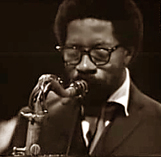
As mentioned previously, Henderson's reharm never moves to Gb, which would complete a full descending Maj. 3rd cycle.
What's curious here is that both tunes are in the same not often played key of D Maj (E Maj for the tenor saxophone). The original key for "Night & Day" is the very common key of Eb Maj concert (tenor key F).
Why then, did JoHen choose D Maj, of all keys; the same key as "Tune Up"?
My guess is that he saw the inherent Maj. 3rd harmonic relationships in both the last 4 bars of "Tune Up", as well as the aforementioned in "Night & Day", and made the necessary harmonic and key change adjustments to successfully fuse the two.
Just a thought!
Anyway, now that we've gotten that out of the way, let's take a look at the solo.
One of the most notable features of Joe Henderson's playing of this period was his use of "sequencing", whereby he would repeat a short melodic shape and / or rhythmic motif, and take it through a set of harmonic changes.
Joe wasted no time here, as he jumped right in at bar #3 with a descending figure, mainly in 3rds, bouncing lithely and tap dancing through several key centers thru bar #8.
What could be the most memorable, singable (danceable?), etc. part of the solo, comes at the end of the second "A" section of Joe's 2nd chorus, from bars #73 thru #79. It includes the 4 bar descending min. & dim 7ths as well as the previously mentioned turnaround.
What makes this section so musically satisfying, is that he not only maintains the melodic shape over the changing harmonies, but slight variations in rhythmic placement make it a living statement.
Sweet, indeed!
After McCoy's piano solo, in bars #258 - 263, Henderson arpeggiates descending diatonic 7th chords against the changing harmonies; accenting rhythmically, along with Elvin, and against the pulse.
These are just a few of the things, 50-plus years after the fact, that still make Joe's solo here, as well as the whole album, a timeless gem.
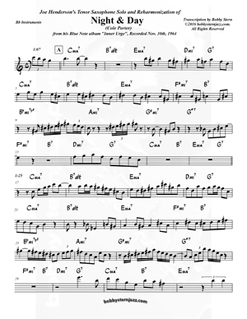
 RSS Feed
RSS Feed
